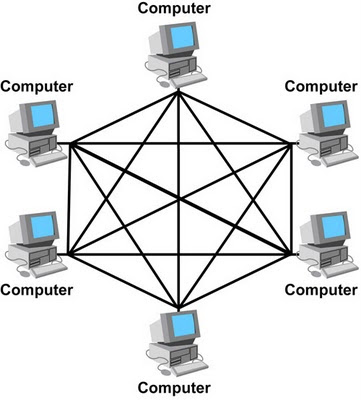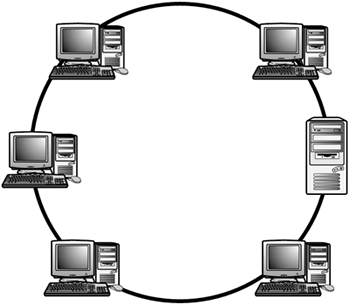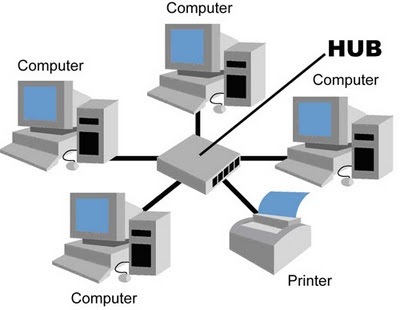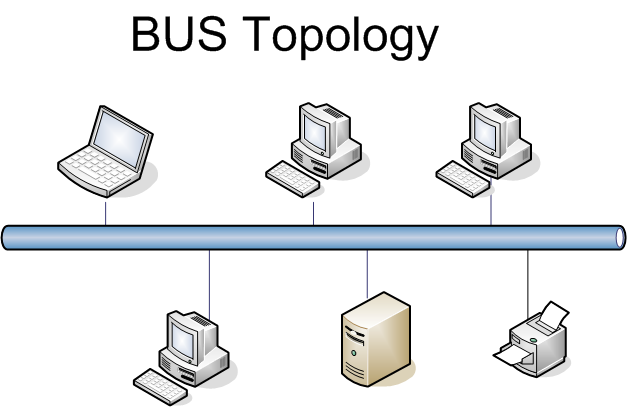A hybrid topology, as the name suggests, is an interconnection of two or more networks. The component networks may be ring, star, tree, mesh or any other, depending upon the requirement of a firm or institution. For example, in an institution, if there is a ring topology in one department, bus topology in the next department, star topology in another department and so on, all the departments can connect to each other through a bus topology that connects the ring, bus and star topologies of each department to each other. Such a topology that consists of more than one type of individual topologies is known as hybrid topology.
 |
| Hybrid topology |
Advantages of hybrid topology
- The benefits of several different types of topologies can be combined into one.
Disadvantages of hybrid topology
- Comparatively expensive than other topologies.







